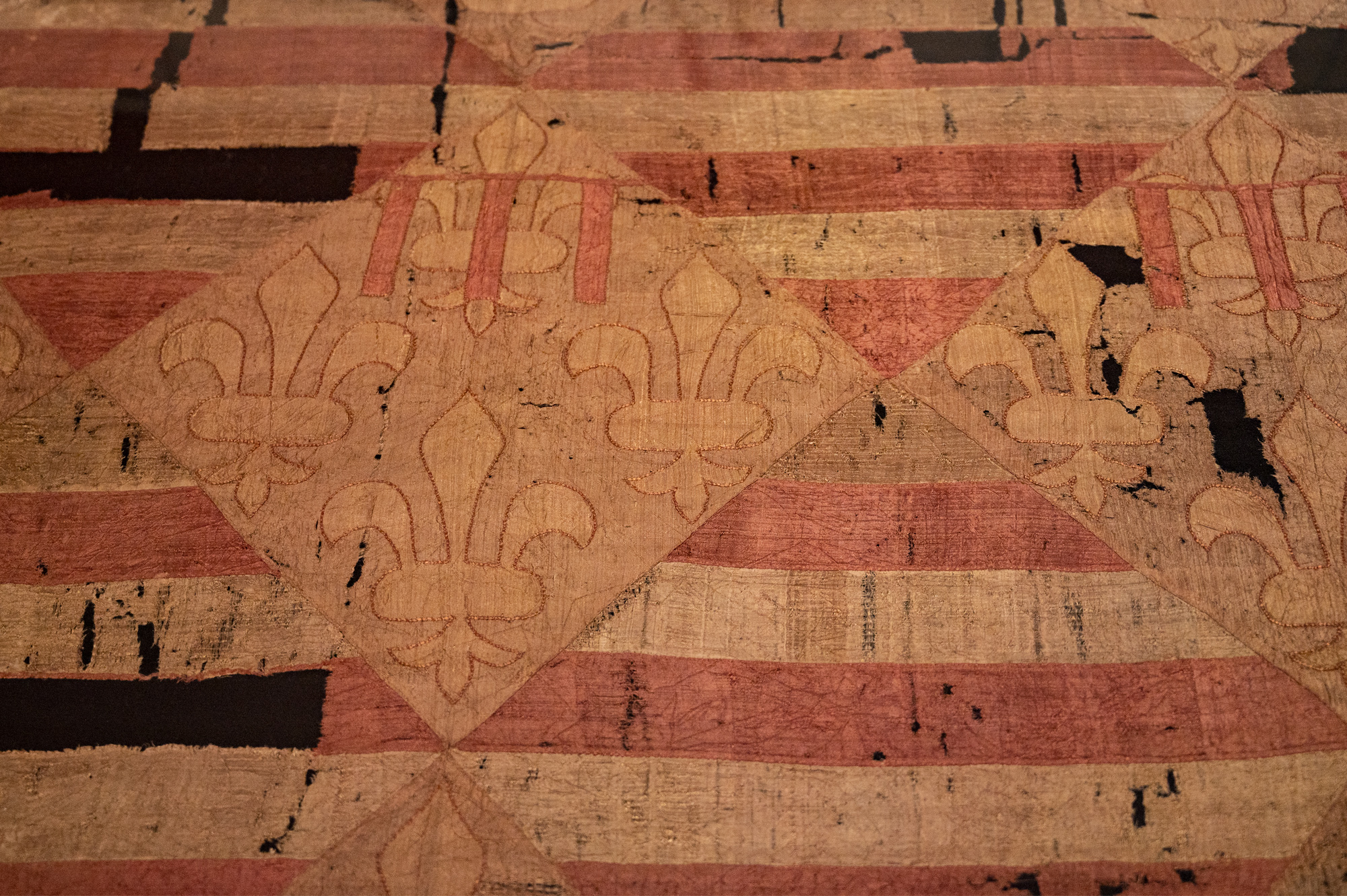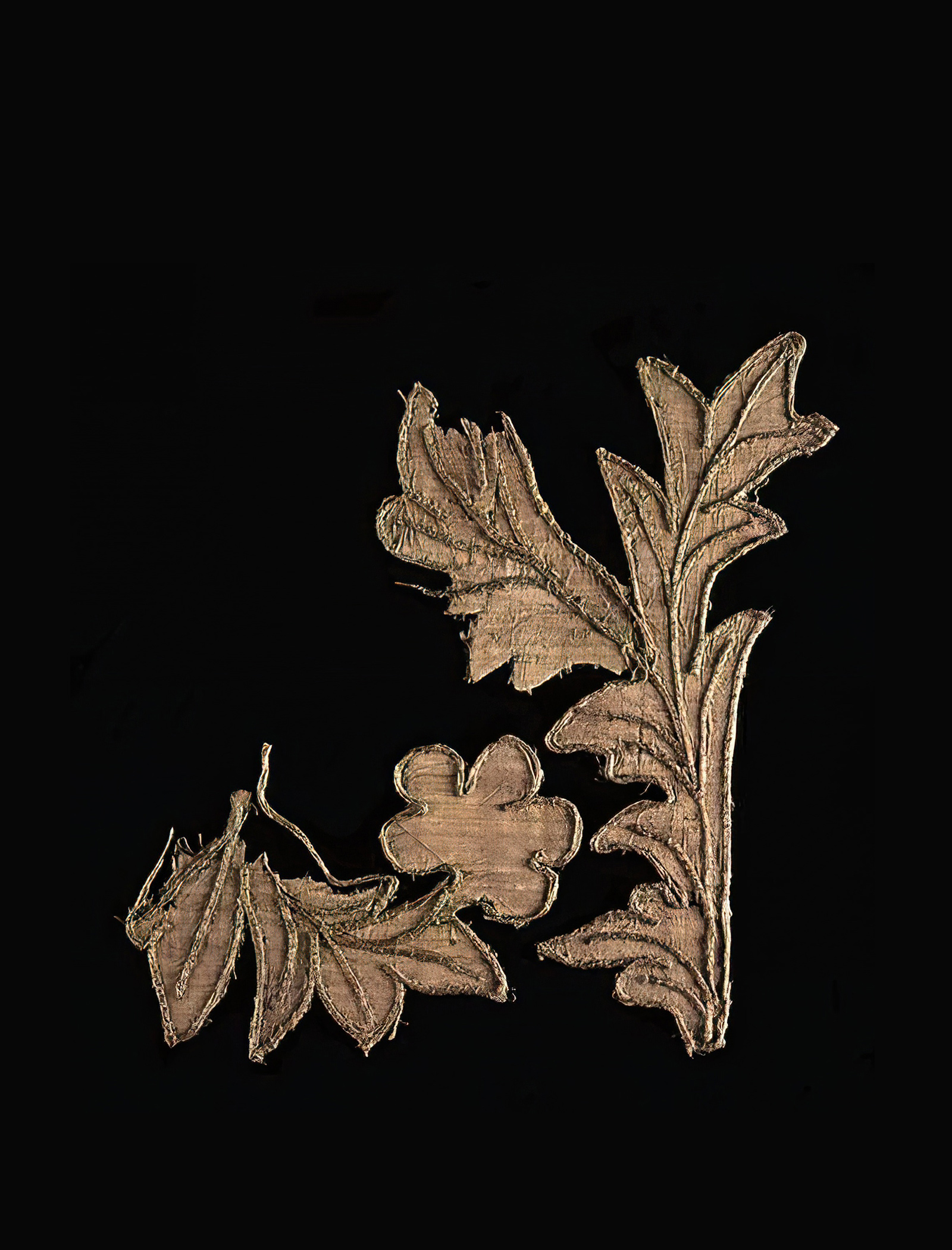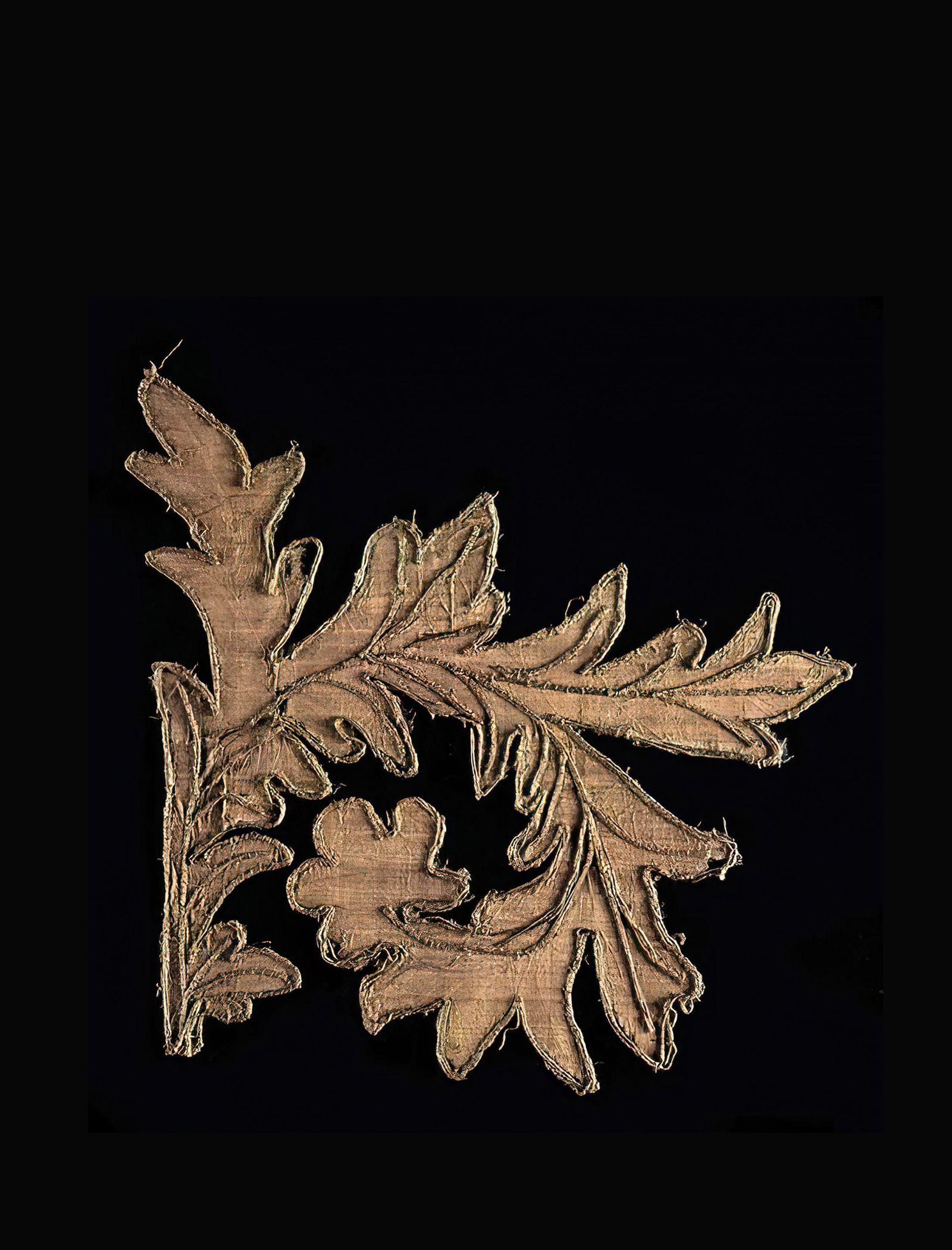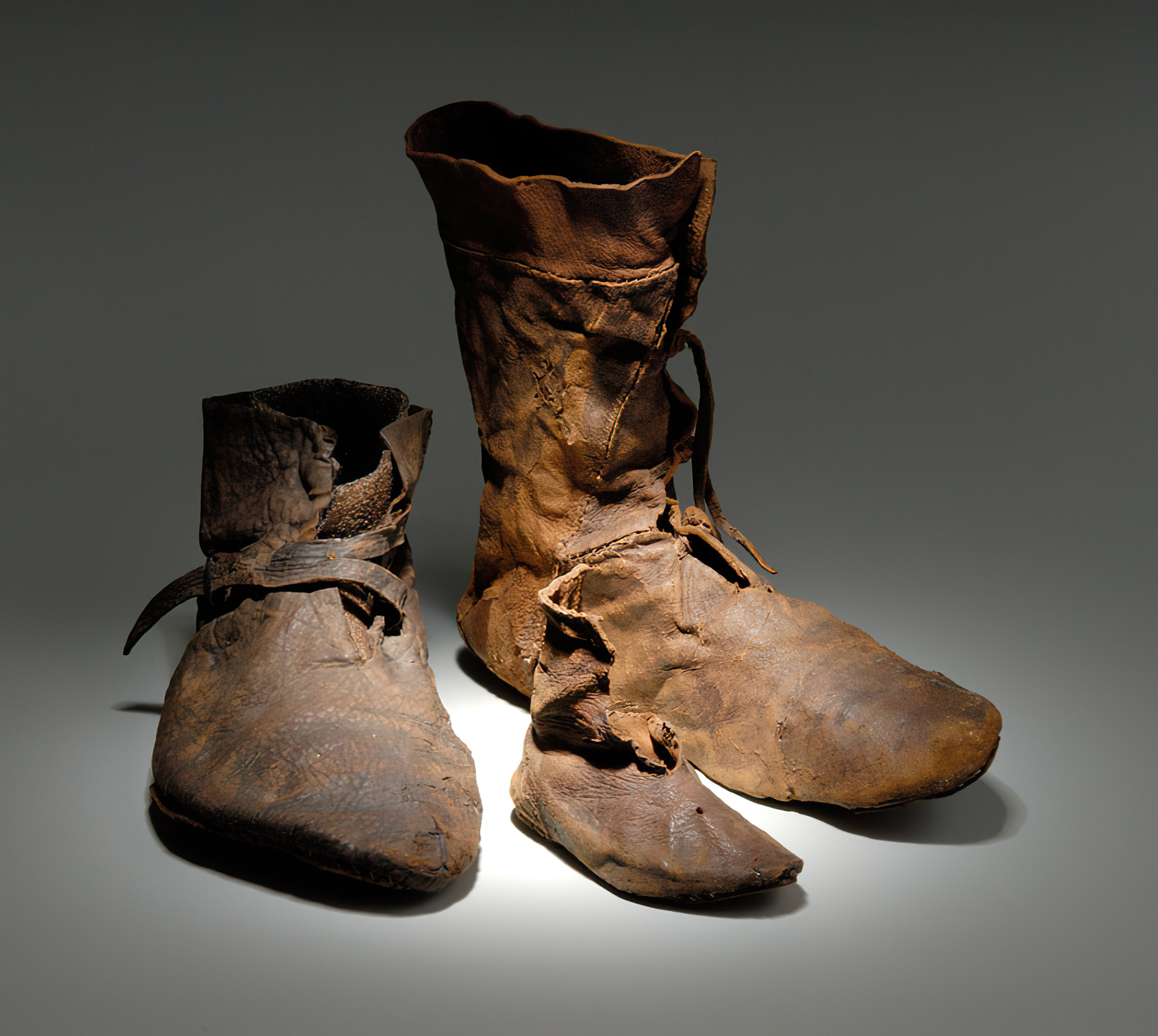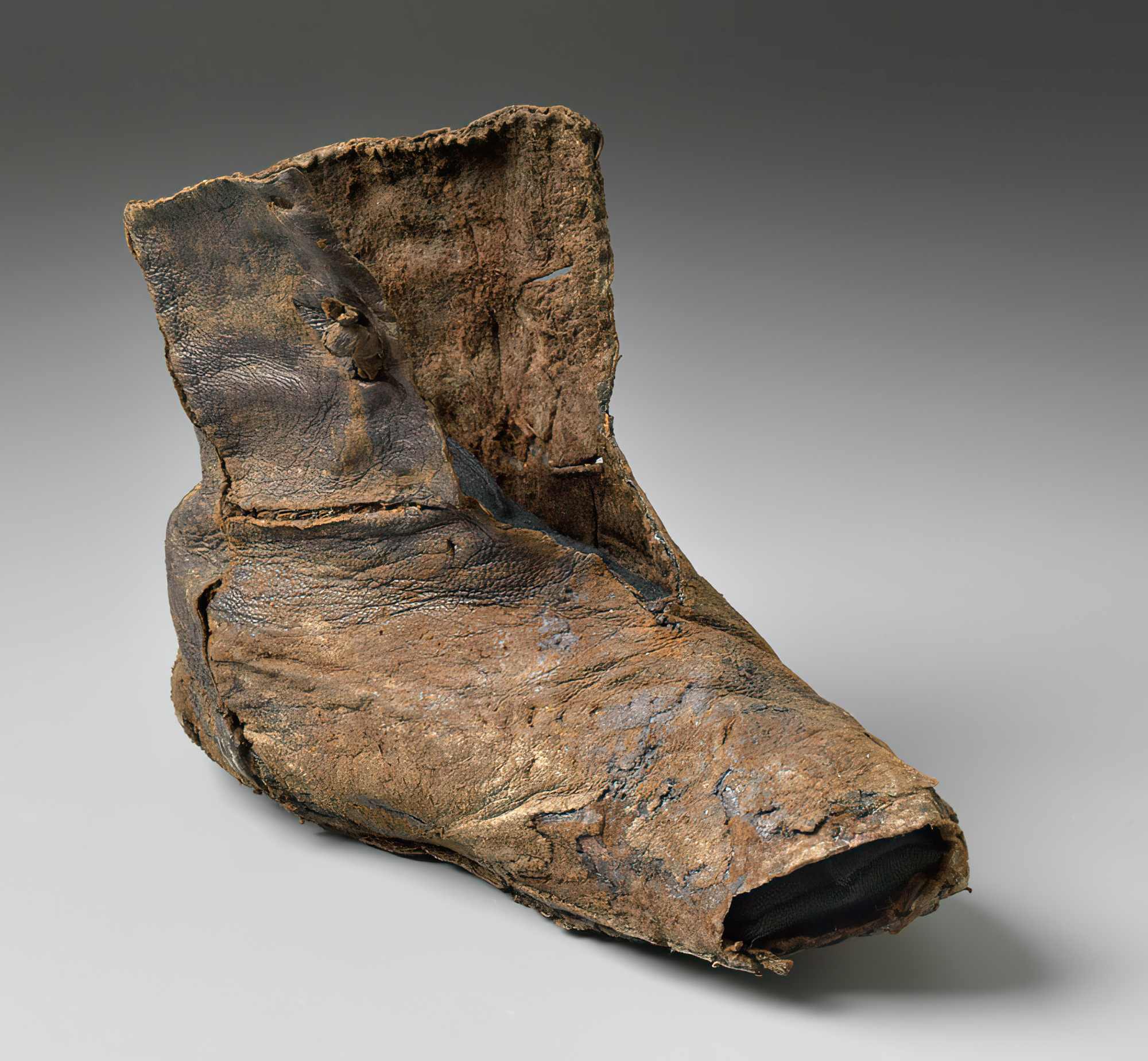Archaeological excavations in the area of the former Teleki Palace in Szent György Square in Buda have uncovered a well cut into the rock in the deep cellar of the palace. The layer of silt, rich in artefacts, filling the bottom 5 meteres of the well, was probably filled in during a clean-up operation. Fortunately, the absence of air and the constant supply of water preserved the organic material – leather, wood, and textiles. The Hungarian-Anjou coat of arms tapestry was excavated in the form of a crumpled mudball at a depth of about 10 m, together with several textile fragments, also made of silk. The date of the burial of the tapestry in the ground at the bottom of the well, recovered from the silt fill, dates to the reign of King Sigismund of Luxembourg (1390-1427).
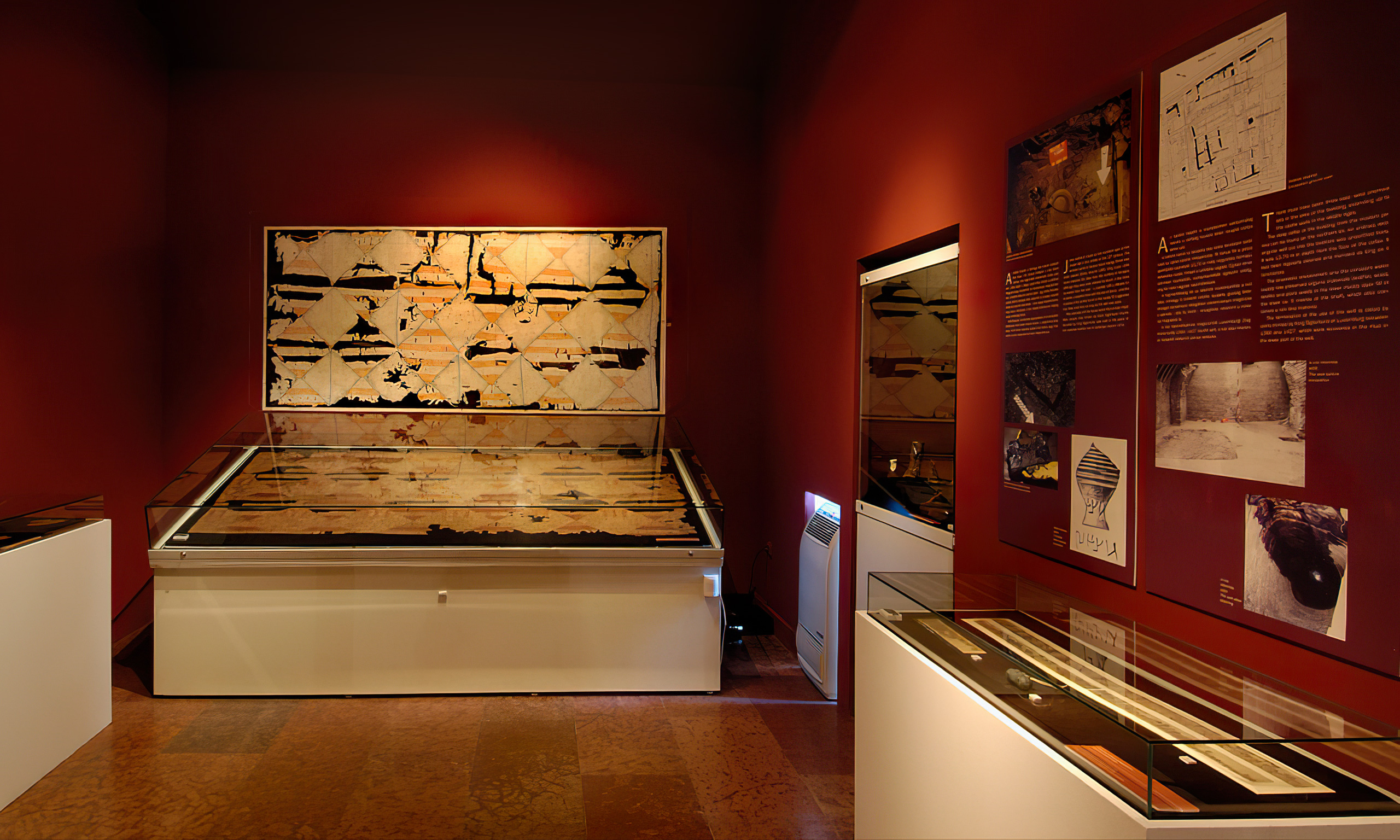
TEXTILES FROM WELL 8
The design of the tapestry depicts the red and silver (white) cut-out coat of arms of the Árpáds and the Anjou coat of arms with gold lilies on a blue background in diamond-shaped, so-called “ruta” shields. The Anjou shield shows a three-pointed, floating, so-called ‘tornagaller’, in the shape of the letter E, above the lilies. This representation, known in heraldry as a coat of arms, links our find to the use of arms by the Anjou rulers of Naples. Because of its depiction, we must look for its owner among the Anjou monarchs and their immediate environment. The tapestry may have been originally lined with an under-lining, according to the stitching marks on it, and the technique used was a stitching technique using a stitching technique, sewn together from several pieces. The original size is not known. In its present form it is roughly trimmed at the edges and folded back, but this may be due to repairs to the frayed material.
